第151章 NOTES(13)
[409]--Varthema says,"The king wears a cap of gold brocade two spans long."This was Krishna Deva's predecessor,Narasimha.
[410]--This may refer to the handsome temple of Anantasayana,a mile or so from Hospett on the road to Kamalapur.The trees still stand in parts.
[411]--FORTALEZAS.Probably the writer refers either to bastions or towers,or to strongly fortified places of refuge on the hilltops.The passage is obscure.
[412]--Four words,TEMDES HUA PORTA PRIMCIPAL,have been accidentally omitted in the printed copy.
[413]--TERREIRO.The gateway here spoken of is most probably the great entrance to the palace enclosure,just to the north of the village of Kamalapur.
[414]--The writer forgot to fulfil this promise.
[415]--POR QUE SAO COMO AS COMFRARYAS que NAS NOSSAS PARTES HAA.
[416]--A MUYTOS NATURAES DA TERRA.
[417]--MUNGUO."Moong ...green gram ...a kind of vetch"(Yule and Burnell,Dict.).
[418]--MACHARUY.
[419]--A VINTEM =17/20of a penny.
[420]--Probably for FANAOS.But the plural of FANAO is usually given as FANOES.
[421]--ESTARNA."A sort of small partridge with black feet"(Michaelis'Dict.).
[422]--Here we have the plural FANOEES.
[423]--Povos is a place near Lisbon.
[424]--Anegundi.
[425]--Below,pp.292,293.
[426]--The stone bridge,built on rows of rough monolithic uprights,the remains of which are still to be seen near the temple of Vitthalasvami,appears,from the absence of allusion to it,to have been constructed at a later date.
[427]--This clearly alludes to the beautifully sculptured temple of Vitthalasvami,which is in the situation described.
[428]--This word is a puzzle.If the temple be,as seems most probable from the description,the principal temple at Hampe,still in use,I suggest that AOPE represents "Hampi"or "Hampe."RADI may be "rajah,"or RADIAN may be "rajyam."The name was perhaps given to Paes by some one who described it as "the royal Hampe temple"and this would accurately describe it.It was dedicated to Virupaksha,and was the cathedral of the great city.
[429]--The word used is ROMEYRA,which may mean either a pomegranate tree or a female pilgrim.The allusion is to the plaster figures and designs on the tower (CORUCHEO)above the gate.
[430]--CINZEYRO apparently means a place for ashes (CINZA).CINZASare "ashes of the dead."The reference may be to a place in a church where incense-burners are kept,or,as I think,equally well to the crypt,and this last sense seems better to suit the context.
[431]--SEUS for SEIS.
[432]--The word is omitted in the original.
[433]--BREDOS.See above,pp.227,245,notes.
[434]--For a discussion as to the dates given in Paes,see p.140ff.above.
[435]--TERREYRO.See above,p.254.Evidently the place of arms is referred to.
[436]--PORTEYROS,PORTEYRO MOOR.These men are often mentioned in the chronicle.Their chief was one of the king's most important officers,and I give him the title "Chief of the Guard."[437]--I am doubtful about this translation.The word used has probably some technical meaning.Yule's Dictionary has SOOSIE from Persian susi."Some kind of silk cloth,but we know not what kind."The original passage runs:--"Quoanto ao pao,sabereis que he toda chea de sues soajes,e de liois todos d ouro,e no vao d estas soajes tem huas chapas d ouro com muytos robis,"&c.
[438]--CABO.I think this must mean the edge,the front,not the extreme end of the king's balcony.
[439]--This is given in the singular number,probably by mistake,as the plural is used immediately afterwards AO CAVALLO ...OS ENCEMCA.
[440]--TAVOLEIRO.
[441]--PAREDES,probably for "purdahs"(Persian,PARDA),curtains or screens.The Portuguese word means a "wall."[442]--MOLHERES SOLTEIRAS E BAYLHADEIRAS,I.E.the dancing girls of the temple and palace.
[443]--LAVODES.See below,p.276,note regarding LAUDES.
[444]--Saluva Timma,the minister.The name is spelt in various ways in the chronicles of both Paes and Nuniz.Krishna Deva owed his throne to him (below,p.315).
[445]--The king of Seringapatam at this period was Bettada Chama Raya,who ruled the Mysore country from 1513to 1552.He had three sons.The two eldest received at his death portions of his estate,but both died without issue.The third son was called "Hire"or "Vira"Chama.He was apparently the most powerful,and the best beloved of his father,since he received as his portion on the latter's death the principal tract of Mysore,the town itself,and the neighbouring province.After the fall of Vijayanagar in 1565he became practically independent,and ruled till the principal power was seized by his relative,Raja Udaiyar,in 1578.The word KUMARA (="son")is often applied in royal families in India to one of the reigning king's offspring,and I venture to think that CUMARVIRYA represents KUMARAVIRAYYA,the king of Seringapatam being himself not present at these feasts,and the personage seen by Paes being his son Vira.
[446]--The writer begins again,"But returning to the feasts."Ihave omitted the phrase here,as it has become rather monotonous.
[447]--A small gold coin,of which it is very difficult to assess the exact value.Abdur Razzak (1443)apparently makes it equal to the half pagoda;Varthema (1503--7)to the pagoda itself;and this latter is the sense in which we must take it.Varthema calls it a "gold ducat."Purchas says it was in his day about the value of a Flemish dollar.The general value assigned in more recent days to the pagoda is 31/2rupees,or seven shillings when the rupee stands at par value.(See Yule and Burnell's Dictionary,"Hobson-Jobson,"S.V."pagoda"and "pardao."Yule apparently values it,at the period treated of,as about 4s.6d.)Barros and Castanheda both agree with Paes that the pardao was worth 360reis.(Below,p.282.)[448]--Kullayi in Telugu.See pp.210,252,note 2,and p.383.These women appear to have worn men's head-dresses.
[449]--The reins were not of leather,but of silk twisted into ropes.